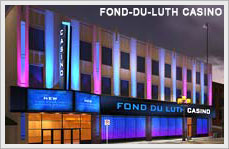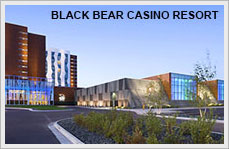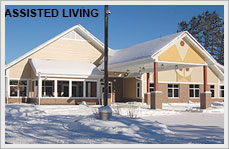Environmental Health
Environmental health addresses all human-health-related aspects of both the natural environment and the built environment. Click the menu below to view information about some of the environmental health concerns at Fond du Lac.
Mold & Humidity
It’s the dead of winter and your house is buttoned-up tight against the wind.
While this will keep you warm, it can also lead to indoor air quality problems, especially if your house is not equipped with an air exchanger. No fresh air comes in and no stale, moist air goes out.
Thanks to the media, it is currently fashionable to blame mold for virtually all house-related ailments. But the fact is that damp houses provide a perfect environment for all kinds of undesirable guests—mold, dust mites, viruses and bacteria—that can contribute to ill health.
Here are some tips for keeping home humidity levels down:
- Use bathroom exhaust fans during and after all showers (leave the fan running at least until the condensation on the bathroom mirror clears). To see if your fan is working properly, turn it on and hold a square of toilet paper up to the air intake. If the toilet paper is not drawn tightly against the casing, the fan may need to be cleaned or replaced.
- Range hoods that exhaust to the outside should be used anytime you are cooking. If you don’t have one, crack open a window or door to allow some of the moisture created by cooking to escape.
- Furniture should be located at least six inches from exterior walls and mattresses and box springs should be raised several inches above basement floors. This will allow warmed air to circulate fully and avoid creating “cold spots,” which can lead to condensation, which can lead to mold.
- Firewood must be stored outside. Bringing one day’s worth of wood into the house at a time will not create a problem, but a larger quantity will add considerable moisture (and mold spores) to the air.
- If your house becomes overly dry, instead of damp, during the winter, you may use a humidifier to bring the moisture level to a more comfortable level (45-50%). If you are using a humidifier, be sure to clean it thoroughly and often to keep bacteria from flourishing.
Radon Gas
Radon is a colorless, odorless, tasteless gas. The only way to tell if you have high levels in your home is to test it.
So, why would you even want to know?
Because radon is considered the second-leading cause of lung cancer in the United States. It is blamed for as many as 15,000 lung-cancer deaths per year in the United States. If you smoke and live in a home with high radon levels, your chances of contracting lung cancer are substantially increased.
Radon is a naturally occurring element that is present throughout the country. It is a byproduct of the radioactive breakdown of uranium in soil, rock and water.
Any home or building can have elevated radon levels, even if the house next door has a very low level of radon. It typically gets into a home through cracks and other holes in the foundation, including gaps around service pipes and construction joints, and becomes trapped inside.
Since the Fond du Lac radon testing program began in 2001, nearly 100 Band member homes have been tested, and 22 have been either successfully mitigated for high radon levels or are scheduled for mitigation in the near future. These numbers indicate that approximately 20%-25% of Fond du Lac area homes have elevated radon levels.
The program has also tested all Head Start facilities, the Ojibwe School, Min-No-Aya-Win Human Services Center, the Center for American Indian Resources, The Fond du Lac Tribal and Community Center, and the Fond du Lac Cultural Center and Museum. All public buildings had radon levels well below the EPA level of concern.
Carbon Monoxide
More than 200 people die every year from accidental exposure to carbon monoxide, sometimes called the “silent killer.” Thousands more are treated in hospital emergency rooms for carbon monoxide poisoning.
Carbon monoxide is a colorless, odorless, poisonous gas produced by incomplete burning of fuels such as natural gas, propane, fuel oil, kerosene, coal or wood. Malfunctioning appliances like furnaces, water heaters, space heaters and stoves are significant sources of carbon monoxide gas. So are idling cars and poorly ventilated boats.
Carbon monoxide interferes with the distribution of oxygen in the body, and early symptoms are often mistaken for the flu. Initial symptoms can include headache, fatigue, shortness of breath, nausea, dizziness, and mental confusion. If you live in a home with any combustion appliances, symptoms like these should not be ignored, especially if more than one person is feeling them.
If you suspect your symptoms are from carbon monoxide poisoning, get fresh air immediately. Open the doors and windows, turn off all combustion appliances and leave the house. Seek medical attention and tell the doctor that you suspect carbon monoxide poisoning so appropriate diagnostic tests can be done.
Preventive maintenance is the best way to avoid carbon monoxide poisoning. Fuel-burning appliances should be properly installed by trained professionals, and heating systems should be inspected and serviced annually. Other preventive measures include:
- Never burn charcoal or use portable fuel-burning camping equipment inside a home, garage, vehicle or tent.
- Never idle a car in a garage, even if the exterior door is open.
- Never use gas appliances such as ranges, ovens or clothes dryers for heating your home, even for a short time.
- Never sleep in a room with an unvented gas or kerosene heater, and don’t operate unvented appliances in rooms where doors and windows are closed.
- Don’t use gasoline powered tools (mowers, weed trimmers, snow blowers, chain saws, small engines or generators) in enclosed spaces.
- Install a carbon monoxide detector/alarm that is certified by Underwriters Laboratories (UL). Detectors should be installed as a backup, and are not intended to be a substitute for proper preventive maintenance. They should be replaced every five years.
For more information contact:
Andrea Junker
Environmental Health Specialist
Fond du Lac Environmental Program
1720 Big Lake Road
Cloquet, MN 55720
Phone: (218) 878-7111
Email Link








